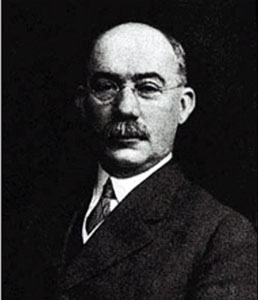There are many different ways to manage something and the methodologies of PRINCE2®, Agile, SCRUM and ITIL® help. In this post our expert John A G Smith explains how a system or 2 can keep our world spinning on the correct axis!
It’s all about systems. Whether you’re looking at something as small as an individual business task or as large as a whole company, they’re all systems. We’re surrounded by the things. We live on a planet within the solar system. Our shower is supplied by a hot water system. I’m writing this on a computer system. Indeed we are each our own individual system: the human body.

Image - Panel 6 Solar Systemm, Ralph Buckley
So what, I hear you say, is a system? And what qualifies each mentioned above as one of them?
It is generally accepted that a system has five components: Inputs, outputs, processes, stores and a boundary.
John A G Smith
5 Aug 2016
Once you have gained your PRINCE2 Practitioner qualification, or attended Intro to Project Management training and started working on projects, you should be considering the different ways to keep projects running smoothly. One of these is configuration management.
The term configuration management conjures up all sorts of questions for project managers, firstly;
- What is configuration management?
- Do I need it?
- How do I apply it?
What is Configuration Management?
Whether we realise it or not, configuration management exists all around us. For example, the make and model of your car or phone, the version of software you use at home or at work and the documents you use in your daily lives could be version controlled.
Essentially what configuration management covers is how we identify things that need to be version controlled, track these items by keeping records, using naming or labelling the latest versions and control the items by getting approval and ensuring that master copies are kept safe.
Do I Need It?
![]()
You mean there's a better way to organise paperwork?
In a project environment, you will at the very least be generating a large amount of paperwork that as a minimum you will need to manage by configuration management.
Have you ever experienced that situation in a meeting when glancing across at a colleague's collection of paperwork, you notice that they have a later or earlier version of the documentation you have?
If configuration were being managed in your project environment, this situation should not happen.
Ideally, you would at least manage your important documentation by ensuring that approved versions are baselined (approved) and then if changes are required, a new version number is generated. This provides a useful history to review where changes were made or for comparison at the end of the project to compare to the original objectives.
In addition, some projects may also create products or deliverables that would benefit from being managed through configuration. Consider the following questions:
- How will we identify these products?
- Where will we store the products?
- What storage retrieval and security will be in place?
- Who will be responsible for configuration management?
These questions lead me onto the next big question which is:
Claudine
10 Oct 2012
Project Management Software. Helpful tool or just another complication?
From free online apps to enterprise solutions, there are hundreds of tools for collaborative and personal projects.
We want to know what the project management community really thinks about PM software.

Do you use free or paid software? Has PM changed for the better or worse?
Take our 1 minute survey to help us understand the PM community's view towards PM software.
We don't require any personal information and all answers will remain anonymous unless you agree for us to use a quote.
MS Project is the most widely used tool for managing projects, but how does it shape up to the latest online apps?
Andy Trainer
30 May 2014
When you come to us for training in PRINCE2, or to learn how to use Microsoft Project, we'll teach you about using Gantt charts to plan and track the progress of your project.
But what do we know about where they came from? Here’s a little bit about Henry Gantt, the brains behind the Gantt Chart.
Henry Laurence Gantt
Henry Gantt was born in 1861 in Maryland, USA. He died in 1919 and developed the management tool that is the Gantt chart just after the turn of the century. He was educated at the Stevens Institute of Technology and became a mechanical engineer.
Gantt soon became known for his passion for economy/efficiency and for his sense of social responsibility. He was an advocate for the social responsibility of businesses and of applying scientific analysis to improve efficiency in industry. While he was a technician, he always strove to develop the most economical methods of production, and achieved a job role of “efficiency expert” at a textile plant in 1904.

Andy Trainer
16 Aug 2012
|
New technology develops at an alarming rate. Business gets more competitive by the day; demands for speed and quality require new thinking and revised processes. Here we list some current trends and challenges for project managers. Today’s project managers need to update their processes in line with business, customer and stakeholder expectations. Collaboration is a common theme. We offer APMG accredited PRINCE2 Training and MSP Training courses at our training centre in Brighton, but we can also come to your premises for training. Call us on 01273 622272 for a quote. |

Adoption of Collaborative Software Solutions
The use of collaborative technologies is on the rise. The use of Google Docsand SharePoint is becoming more commonplace. Virtual workers and projects require efficient ways of communication and collaboration.
Automatic and central distribution and control of documents has never been easier.
Agile Project Management
As projects become increasingly complex, project managers need to be increasingly flexible. Businesses and organisations are beginning to adopt Agile Project Management practices and combining them with traditional project management. Many are using Agile to inform and develop a new set of strategies for coping with projects, adapting methods for team collaboration and communication.
Agile Project Management Training enables you to gain Agile Practitioner Certification, enabling you to successfully manage Agile projects.
Andy Trainer
23 Mar 2012
Change management is the most significant leadership challenge of this decade. We are operating in an environment of fast paced change frequently driven by technological innovation. The scale of the change is far reaching often because business processes and system usage are so inter-dependent that a change in one can affect many others across different departments and functions.
For this reason effective change management requires matrix management, as the authority to change a process in all the departments that it moves through cannot be delivered through a silo based management structure.

We've been running Change Management Courses for years but recently added APMG's Certified Change Management Practitioner Course which is set to take off in 2014.
Change management brings together two distinct streams of work:
- Delivery of structural change through the introduction of new systems, processes, people, product and service innovation and the creation of new markets, suppliers, customers and competitors.
- Behavioural change leading to a new emphasis, new culture and values, and changed priorities for each individual impacted by the structural change.
Delivery of structural change can be “mechanised”, relying upon a foundation of project management processes and skills. Activities can be identified, their duration estimated, and schedules and plans developed with a reasonable level of certainty.
Behavioural change though requires an understanding of how the organisation operates as a living being, the power plays operating beneath the surface of the organisation structure, the values that individuals apply to their work and the forces that generate commitment, loyalty and motivation. Behavioural change can generate resistance, confusion and stress, decreased productivity and distancing of the individual from the ‘organisational good’.
As with structural change, resources in behavioural change must be assigned to take responsibility for developing and applying the change management methodology, communicating throughout the change, continuously measuring progress, recognising and rewarding results, and reinforcing change so it becomes embedded in the culture.
Andy Trainer
27 Jan 2014
Scope creep is a project manager's nightmare, which makes it an important part of our Introduction to Project Management course. In this post, our PRINCE2 and project management trainer Claudine gives a brief oversight of scope creep and how to manage it.

Firstly let’s clarify what scope is. It is the boundaries of what will be included or excluded from your project. For example:
- Features or functionality of a product
- Information or data included or excluded
- Organisations or stakeholders
- Procedures or processes
Managing scope creep is easier when using an established project management methodology like PRINCE2, which goes some way to explain why PRINCE2 Practitioner training is one of our most popular courses!
Why is it important to define scope?
One of the biggest gripes project managers have is of the “moving goal posts” or scope creep. This involves a large number of additions or changes to the requirements of a project, resulting in timescales and budgets to be exceeded. In addition, it also becomes difficult to plan and resource a project that is in a constant state of flux and transformation.
So it is important that scope is managed correctly so that the project manager is able to deliver a product within their objectives of time, cost, quality, scope, risk and benefit.
by Claudine
6 Nov 2012
Some people say otherwise, but a wedding *is* a project. It has a set purpose and the project has an end date. It has a project team, project manager and most certainly has a budget. Certain milestones must be achieved at certain times in order for the goal to be reached. Later goals depend on achieving earlier ones.
So, you could be a PM professional with a wedding to plan; or you might have found us because you are a bride-to-be looking for structure to tackle this massive task. You could take our 1-day Project Management course, or even our PRINCE2 qualifications to really know how to manage your wedding! Following on from our popular Project Manage Your Life, here’s our simple guide to project managing a wedding:

Benefits Criteria
The first thing to do is identify the benefits criteria that will define project success. These can be such things as:
- Everyone being where they should be at the right times
- Happy guests
- No family conflict (yes, it’s a factor)
- (For the bride), feeling beautiful
- Having a stress-less wedding planning experience
- Choosing wedding suppliers you can trust to deliver
Andy Trainer
6 Aug 2012